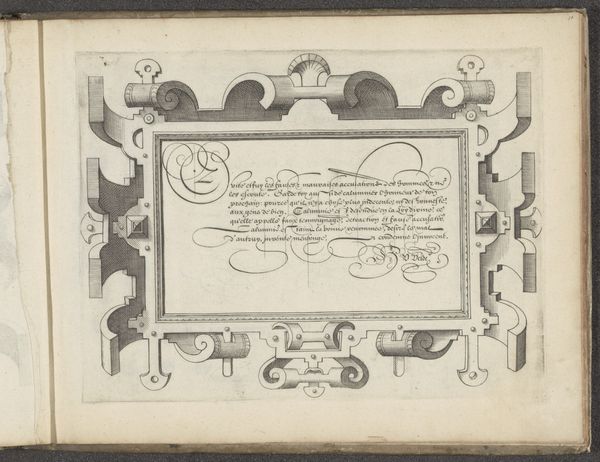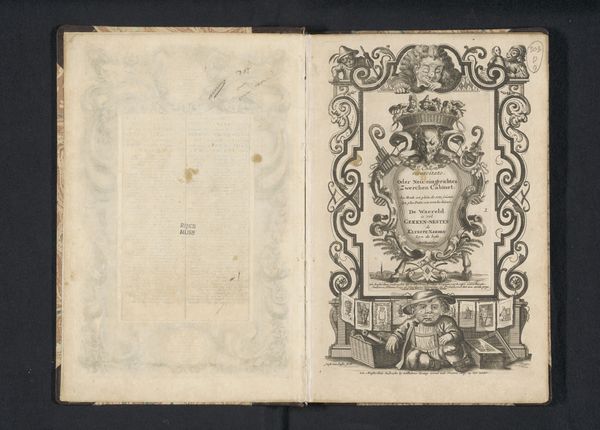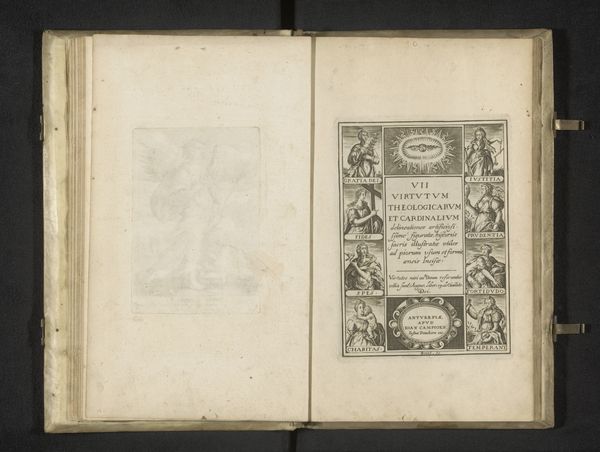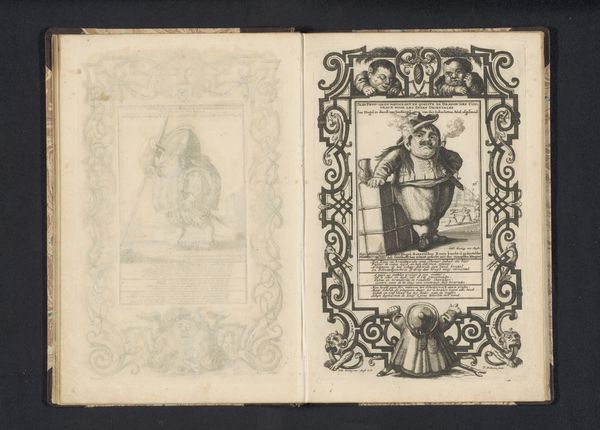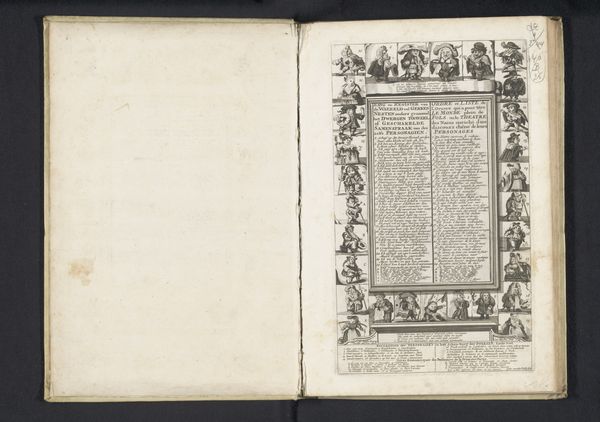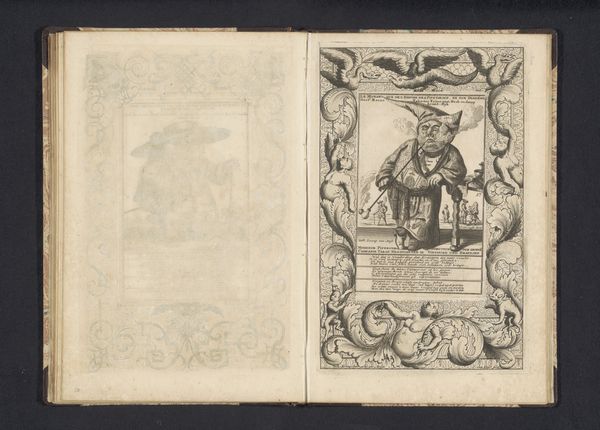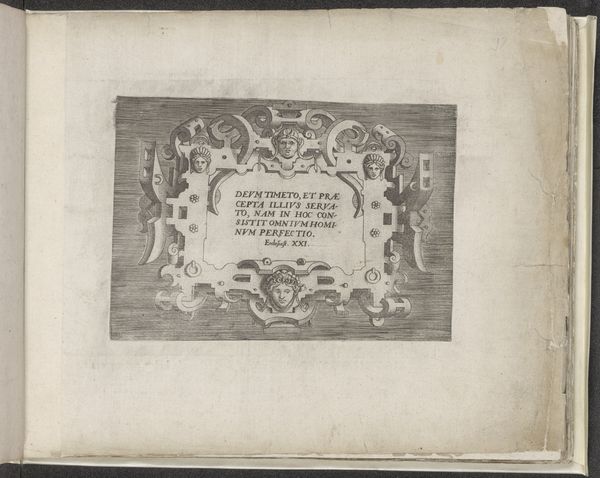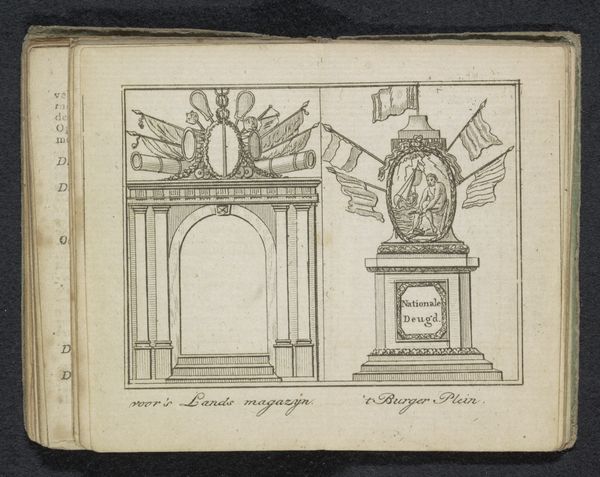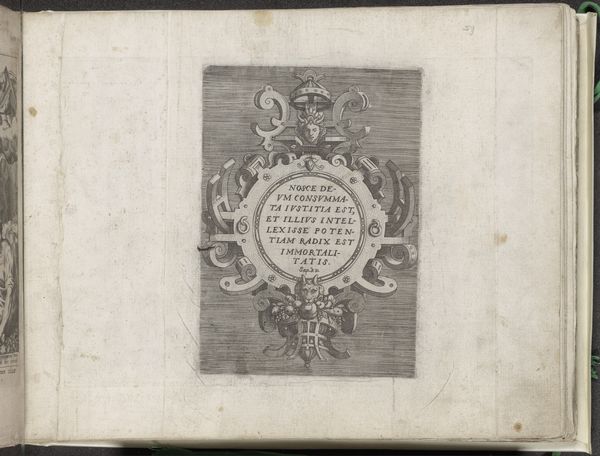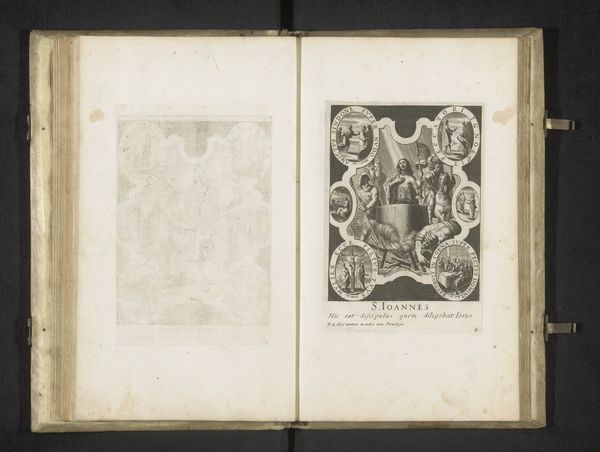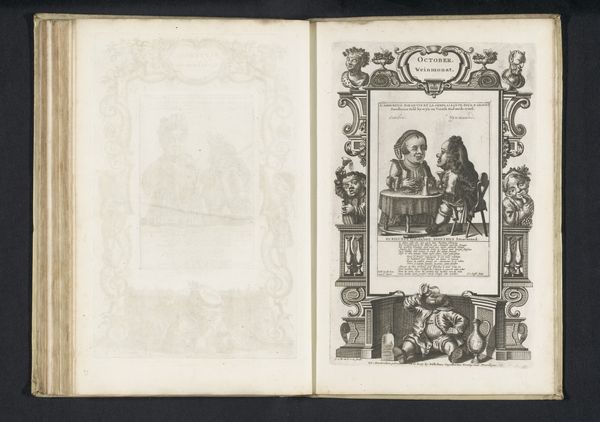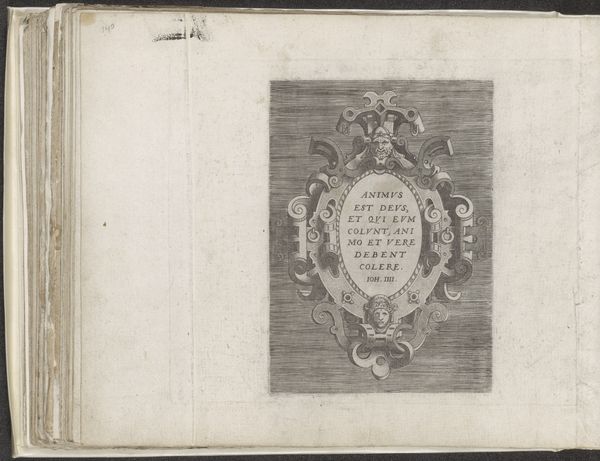
drawing, print, etching, graphite, pen
#
drawing
#
neoclacissism
#
aged paper
#
toned paper
# print
#
etching
#
sketch book
#
figuration
#
personal sketchbook
#
journal
#
coloured pencil
#
geometric
#
pen and pencil
#
line
#
graphite
#
sketchbook drawing
#
pen
#
history-painting
#
storyboard and sketchbook work
#
sketchbook art
Dimensions: height 98 mm, width 115 mm
Copyright: Rijks Museum: Open Domain
Editor: Here we have "Decoratie in de Beurssteeg, 1795," created by an anonymous artist. It's a drawing, or rather, a print combining etching, pen, graphite and coloured pencil on toned paper. It seems like a page torn straight from a sketchbook or journal. What strikes you about this particular artifact? Curator: It's intriguing to see the convergence of drawing and printmaking in documenting what seems to be a fleeting moment of revolutionary fervor. Given its apparent purpose, I'd focus less on artistic expression and more on its functionality and material production. What type of paper was used, for example, and why? What was the socio-political status of printmakers and distributors who produced works such as this? Editor: That makes sense. So, beyond the aesthetic qualities, you are more drawn to how the image functions as a historical artifact? Curator: Precisely. Consider the economic conditions influencing the production and circulation of such imagery during this period. It's crucial to explore the labor involved and the access everyday people had to it, alongside its intended purpose as a piece of political propaganda during the Batavian Revolution. Does the paper stock reflect urgency of production? Is it cheap and widely available, or carefully selected and more rarified? These are critical elements to unpacking what's at play here. Editor: It does appear rather rough; it’s like the artist or printer had to work with whatever was at hand to get the message out swiftly. I hadn't considered that the materiality itself tells part of the story. Curator: Exactly! How does it challenge or uphold traditional distinctions of fine art versus functional or propagandistic prints? Does the means of its making influence or reflect its message? Editor: This definitely changes how I view this work! I will think of how materiality can shape the narrative in art production. Curator: Indeed, it redirects focus toward tangible conditions of cultural expression.
Comments
No comments
Be the first to comment and join the conversation on the ultimate creative platform.
